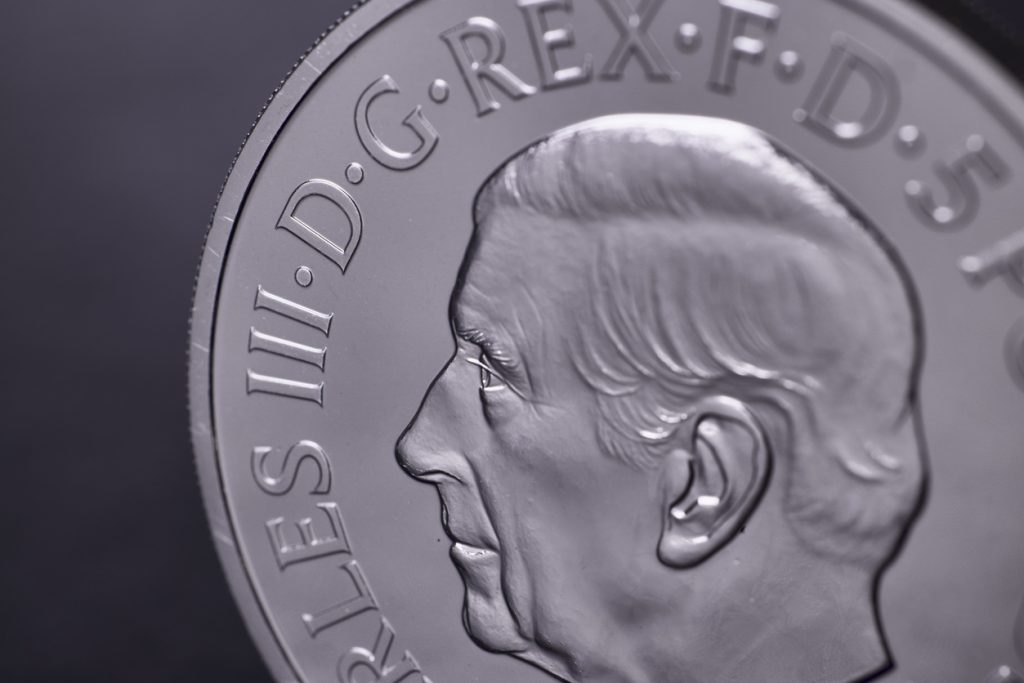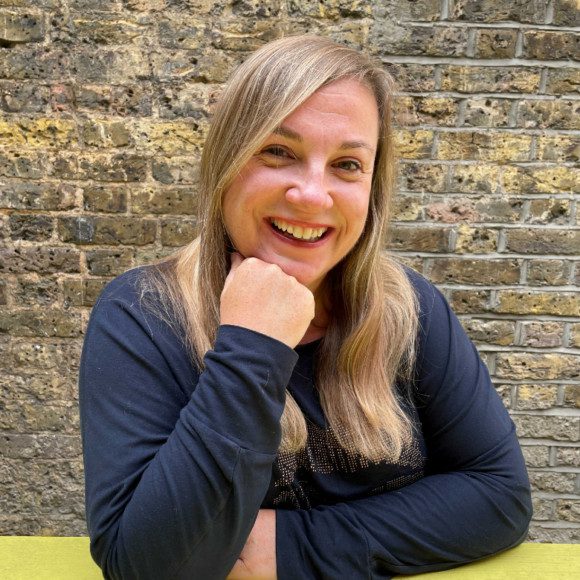Quantitative market research questions to ask for actionable insights

There’s a big difference between asking “Why do you like our product?” and “On a scale of 1-10, how much do you like our product?” But both ways of asking are valuable in their own way.
Knowing your audience is not about guesswork or intuition, it is about concrete data. And while it’s valuable to learn the ‘why’ behind the ‘what’ with qualitative research, quantitative research is just as necessary — to spot trends, patterns and more.
Unlike qualitative research, which explores attitudes, opinions, and motivations through open-ended questions, quantitative research zeroes in on the numbers (see what we did there?). It’s the difference between gathering general opinions and collecting measurable, specific data.
But when is this approach the way to go? For starters, whenever you need to track factors over time, such as customer satisfaction. Or when assessing the popularity of a potential product feature, understanding demographic preferences, or analyzing consumer purchasing behavior in different locations.
Quantitative research reveals the impact and scale of sentiments for better decision-making. It’s also valuable when you’re looking to quantify the extent of a trend, measure the impact of a marketing campaign, or pin down the specifics of consumer behavior.
But how do you ask quantitative market research questions that don’t just scratch the surface? We’re here to give you some great examples of quantitative survey questions.
Types of quantitative market research questions
When thinking of quantitative market research questions, people often think ‘ah, numbers‘. But there’s more than meets the eye. Here’s how you can categorize the different types of quantitative research questions:
Descriptive quantitative research questions
These are your what, when, and how many types of questions. They help you sketch out the basic landscape of your market. For example, “How often do you shop online in a month?” or “What is your preferred method of payment while shopping online?” When you give answers people can select, it is quantifiable data. That’s different from asking: ”describe what a day out shopping looks like for you”, which is a qualitative question.
Comparative quantitative survey questions
These questions measure differences or changes over time or between groups. For instance, “How has your spending on online shopping changed since last year?” Comparative questions help you understand the dynamics and shifts in your market. Remember that you’re not just trying to find overlap: it’s just as important to know what differences there are.
Relationship-based quantitative survey questions
These questions aim to uncover correlations or relationships between two or more variables. They can reveal insights like, “Is there a link between age and the likelihood of using mobile payments?” These questions help you understand the deeper connections within your market, as well as test assumptions, as long as you dare to ask questions that challenge what you’re hoping to find.
Now, a quick note on reducing bias in quantitative survey questions. Here are some key points to remember:
- The key is in how you frame your questions.
- Always aim for neutrality.
- Avoid leading questions that suggest a particular answer.
- Be specific and clear to avoid confusion.
- Consider the order of your questions, as earlier questions can influence responses to later ones.
And finally, test your survey with a small group before a full rollout, to catch and correct any unintentional bias. This way, you ensure the data you collect is as accurate and reliable as possible, giving you the best insights to make those crucial business decisions.
36 Quantitative research questions and examples
If you want to make a quantitative survey that hits the spot, don’t just ask generic questions. We’re here with some examples that you can adapt to make your research a success.
Descriptive market research questions
With a descriptive quantitative research question, you can quickly get the most important info for your respondents on anything ranging from buying frequency to satisfaction levels.
- How often do you use our product or service?
- Insight: this question reveals the frequency of use, indicating customer dependency on your product or service.
- Benefit: understanding usage patterns can guide inventory management and marketing strategies.
- What is your preferred method of communication with a brand (email, social media, phone, etc.)?
- Insight: reveals the communication channels most favored by your audience.
- Benefit: tailor your customer service and marketing outreach to your customers’ preferred channels.
- How much do you typically spend on [product category] per month?
- Insight: provides an average spending figure for budget allocation in that category.
- Benefit: helps in pricing strategies and identifying the most lucrative customer segments.
- At what time of day do you usually shop online?
- Insight: uncovers patterns in online shopping behavior.
- Benefit: optimizes the timing of online marketing campaigns and promotions.
- Where do you typically hear about new products or services (social media, word of mouth, online ads, etc.)?
- Insight: identifies the most effective channels for brand discovery.
- Benefit: informs where to allocate advertising spend for maximum impact.
- How many times have you recommended [product/service] to someone in the past month?
- Insight: measures the likelihood (not effectiveness!) of word-of-mouth referrals.
- Benefit: assesses customer satisfaction and the potential for organic growth.
- What is your main reason for choosing [product/service] over competitors?
- Insight: highlights your unique selling points from the customer’s perspective.
- Benefit: guides messaging to emphasize what customers value most about your brand.
- On a scale of 1-10, how would you rate your last experience with [Brand X’s] customer service team?
- Insight: offers a quantifiable measure of customer service satisfaction.
- Benefit: identifies areas for improvement in customer support.
- Which of our product features do you use the most?
- Insight: sheds light on the most popular aspects of your product.
- Benefit: informs product development and feature enhancement.
- What factors most influence your decision to purchase a new [product/service]?
- Insight: uncovers the key motivators behind purchasing decisions.
- Benefit: helps create targeted marketing campaigns to focus on these driving factors.
Comparative market research questions
If you want to analyze and compare different variables, these questions can help.
- How much do you spend on online shopping now compared to last year?
- Insight: highlights changes in consumer spending habits over time.
- Benefit: useful for identifying trends and shifts in consumer behavior, aiding in long-term planning. Especially valuable if you add qualitative insights to this quantitative data.
- Are you more likely to purchase products in-store or online?
- Insight: compares consumer preferences between different shopping channels.
- Benefit: guides omnichannel marketing strategies and resource allocation.
- How has your preference for sustainable products increased in the past year?
- Insight: tracks changing consumer values and preferences over time.
- Benefit: useful for aligning product development and marketing with evolving consumer values.
- For your last purchase, did you consider price more important than brand reputation?
- Insight: compares the weight of price versus brand in purchasing decisions.
- Benefit: informs pricing strategies and brand positioning efforts.
- How appealing do you find this packaging?
- Insight: evaluates customer perception of marketing efforts in product packaging.
- Benefit: assesses the impact of packaging on brand image and customer approval.
Relationship-based questions for quantitative research
In quantitative research, especially when exploring relationship-based aspects, the key is not to cram multiple inquiries into one question but to ask them sequentially.
This approach allows for a clearer and more focused response to each individual question. Later, during the analysis phase, you can then correlate the responses to uncover relationships between different variables.
For instance, instead of asking, “How often do you use our product and how satisfied are you with it?”, split this into two separate questions:
- “How often do you use our product (daily, weekly, monthly)?”
- “On a scale of 1-10, how satisfied are you with our product?”
By asking these questions separately, you ensure that respondents clearly focus on each aspect without being overwhelmed or confused by a dual-focused question. This approach yields more accurate and reliable data.
After the survey, you can analyze the results to see if there’s a correlation between usage frequency and satisfaction levels.
Here are some examples of combinations that can work well:
- What is your age group?
- Do you prefer shopping online or in-store?
- Insight: correlates age with shopping preferences.
- Benefit: you can tailor marketing and sales strategies to different age demographics based on their preferred shopping channels.
- How long have you been using our products/services?
- How likely are you to recommend us to others (on a scale of 1-10)?
- Insight: links customer tenure with brand loyalty.
- Benefit: assesses the impact of long-term use on loyalty, informing customer retention initiatives.
- What is your approximate annual income?
- How often do you purchase premium products?
- Insight: examines the relationship between income levels and purchasing behavior for premium products.
- Benefit: guides product and pricing strategies targeting different income segments.
- How often do you use social media for product discovery?
- How many online purchases do you make in a typical month?
- Insight: assesses if frequent social media use for product discovery actually influences online shopping behavior.
- Benefit: informs the effectiveness of social media marketing in driving online sales in your target market.
- How would you rate your satisfaction with our post-purchase customer service (scale of 0-10)?
- How likely are you to make another purchase?
- Insight: links the level of service post-purchase with the likelihood of repeat purchases.
- Benefit: identifies if customer service is negatively or positively affecting repeat custom rates.
Brand tracking questions for quantitative insights
One thing you should definitely gather numerical data on, is your brand’s health. Just like your own health, stats, and numbers matter and can show you where to further investigate to ask qualitative research questions about. Learn if your brand stands strong through market trends and gain insights on whether your brand is growing in terms of awareness — and in which segments.
- On a scale of 0-10, how familiar are you with our brand?
- Insight: measures brand awareness among the target audience.
- Benefit: helps assess the effectiveness of your marketing and branding efforts.
- How likely are you to recommend our brand to a friend or colleague (scale of 0-10)?
- Insight: evaluates brand loyalty and the potential for organic growth through word-of-mouth.
- Benefit: indicates customer satisfaction and the potential for brand advocacy.
- From where have you heard about our brand? (e.g., social media, word of mouth, online advertising)
- Insight: Identifies the most effective channels for brand discovery.
- Benefit: Informs where to focus marketing efforts for increased brand exposure.
- How often do you see or hear about our brand? (e.g., rarely, sometimes, often)
- Insight: Measures brand visibility and frequency of encounters with the brand.
- Benefit: Helps evaluate the reach and frequency of marketing campaigns.
- Which of our brand values do you find most appealing? (list brand values for selection)
- Insight: Determines which brand values resonate most with the audience.
- Benefit: Aids in refining brand messaging and aligning it with customer values.
Quantitative consumer segmentation questions
Quantitative questions about customer segments can go beyond age group and gender. King Charles III is the same age as Ozzy Osbourne – would you say they’re very similar?

It is vital that you look at more variables so you can really tell the difference between your respondents, and make informed decisions based on the whole truth. Putting these consumer profiling questions and answers in specific ranges helps you create segments to tailor your marketing and customer experience for, rather than just aiming at the entire population.
- What is your household income range?
- Insight: helps understand the economic demographics of your customers.
- Benefit: assists in pricing strategies and identifying which income groups are most engaged with your brand.
- Which geographical region do you live in?
- Insight: reveals geographical spread and regional preferences.
- Benefit: guides regional marketing efforts and product distribution strategies.
- What is your highest level of education?
- Insight: helps categorize customers by education level.
- Benefit: useful for tailoring communication and content complexity to different education backgrounds.
- What industry do you work in?
- Insight: provides insights into the professional background of your customers.
- Benefit: helps in creating industry-specific marketing campaigns and products.
- How many people are in your household?
- Insight: gives an idea of household size and composition.
- Benefit: useful for targeting products and services aimed at families or individuals.
- Do you have children under 18?
- Insight: identifies customers who are parents of minors (which is different from parents of young adults, or even grown adults).
- Benefit: informs product and marketing strategies aimed at families with children.
How to write your own quantitative market research questions
Okay, so now you got the gist of it and have seen what quantitative questions can look like — as they come in all shapes and sizes. But they might feel too generic for your research, or you’re looking for something specific.
Here’s how you can whip up your own quantitative questions that deliver the insights you need for data-driven decisions.
Identify the key variables you need to measure
Start by pinpointing exactly what you want to know. Is it customer satisfaction, buying behavior, or brand awareness? Determining the specific variables you need to measure sets the foundation for your entire survey.
Choose the right survey distribution method
Think about how your questions will reach your audience. Will it be online through email or social media, over the phone, or in person? Your method should align with where your target audience is most active and responsive.
Make sure your questions are crystal-clear and unequivocally unbiased
We’ve mentioned it earlier, and we’ll do it again if we have to. The way you phrase your questions can make or break your survey. Aim for clarity and simplicity – questions should be easy to understand and answer. Avoid leading or loaded questions that might sway a respondent’s answer. Remember: it’s a survey, not a sales pitch.
Know where to ask for more detailed information and qualitative data
Quantitative market research questions only tell part of the story. If you see interesting trends in say purchase behavior or price sensitivity, or a particular product gets a bad rating, dig a little deeper. Follow up important questions with qualitative research questions to analyze what’s going on behind the numbers.
How to collect insightful data from your quantitative surveys
If you don’t want to end up with a pile of quantitative data that doesn’t do much for you or breaks the bank unnecessarily, it’s vital you choose a form of distributing the survey that makes sense. You can work with UK market research companies to outsource it all, or do it yourself. Here’s a brief look at the pros and cons of popular methods:
Telephone surveys:
- Pros: good for less tech-savvy demographics.
- Cons: time-consuming, potentially costly, and declining response rates. They might be better for qualitative research.
In-person surveys:
- Pros: also avoids any confusion with tech.
- Cons: logistically demanding and expensive, not suited for quick data collection.
Online survey software:
- Pros: cost-effective, broad reach, real-time data analysis, and versatile formats.
- Cons: it’s extra important to pay close attention to survey design, so people don’t get the urge to give false answers just to get to the end.
The choice is yours, but generally, quantitative research thrives when done with online surveys and it’s the go-to method for most international market research. And here at Attest, we help you get even more out of it by giving you a chock-full toolkit. From various types of questions to robust analytical tools (and a dedicated research expert for when you need a little extra help) — we set you up for measurable success.
Receive quantitative insights in weeks, not months
Speed and accuracy in market research matter — but we don’t want you to sacrifice quality. With Attest, you get fast, actionable and high-quality insights.
Tell us what you think of this article by leaving a comment on LinkedIn.
Or share it on:
